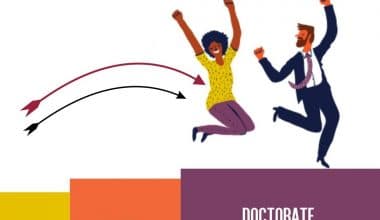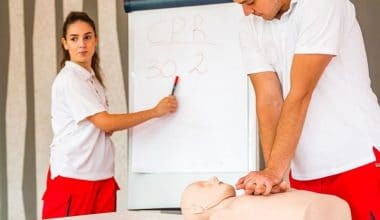Many students are concerned about what their first day of college classes will be like. They may be concerned about whether the course structures will be appropriate for their learning styles.
Self-directed learning is more common in college courses than in high school. More specialized or career-oriented themes are also covered in college classes.
Because different course forms offer a variety of learning experiences, it can be difficult to generalize the demands of college programs.
In this article, Several types of college classes and courses are described for you to consider taking throughout your time as a student.
Do well to read through this article to the end, as it’ll be very helpful.
In college, Courses are of many types. You may need to take additional courses to help you prepare for college-level courses, depending on your placement exam results.
These additional courses are necessary at certain colleges before you can begin your program of study; at others, they are recommended but not required.
You’ll have a lot of new experiences. One thing that may surprise you is the wide variety of college courses available. You could be in a large lecture class, performing research, or getting hands-on training in a lab.
Types of classes in college
Lecture
This is a large class given in a lecture hall, which is similar to a theater and can hold hundreds of students.
While pupils take notes, the professor speaks to the entire class. In first-year courses, lecture classes are prevalent. These students may also enroll in a relevant discussion class.
Seminar
Professors meet with a small group of students in seminars. These are usually advanced courses that focus on a specific topic within the student’s field of study.
Seminars are more intimate, with students contributing more to presentations and discussions. Some workshops are geared toward developing job or research abilities.
What Is the Difference Between a Seminar and a Lecture?
Seminars and lectures are two of the most prevalent types of college classes.
Seminars are often smaller, discussion-based classes that promote open dialogue and critical thinking. Small classes are common in these types of college courses.
Students can make a circle or a horseshoe out of their desks. The small class size allows students to ask more questions and have more meaningful dialogues with lecturers.
Writing assignments, class participation, and student presentation projects are frequently graded (as opposed to traditional exams).
New students might benefit from first-year seminars by making friends, improving their study abilities, and networking with faculty members.
However, keep in mind that certain courses may not satisfy major or minor requirements.
Lectures frequently have bigger class sizes and are held in lecture halls that resemble auditoriums.
Because they can handle a large number of students, lecture formats are popular for basic courses like biology 101 and psychology 101.
While students take notes, professors chat and use visual presentations to teach course content.
Quizzes and regular exams are commonly used to grade students. Larger class sizes and more organized teaching might make asking questions and contacting instructors outside of class more difficult.
TYPES OF COLLEGE CLASSES
1. Discussion Lecture classes
Discussion Lecture classes frequently include discussion classes (also known as sections). Smaller groups of students are frequently guided by graduate students during discussions.
You’ll do extra work, discuss the lecture, and get the opportunity to ask questions. Students who want more interactive learning may be concerned that lectures provide impersonal or inadequate education.
Some lecture-style courses contain discussion portions to allow for participatory, student-led conversation. Learners are divided into smaller discussion groups at this point.
Although discussion sections may not be for course credit in and of themselves, they are frequently necessary components of accompanying lectures.
Learners can use this time to review course material and discuss it with their classmates in greater depth. Professors may not always be available or able to assist students through the content of large lectures.
Instead of professors, teaching assistants (TAs) may lead discussion sections. Students who need extra help grasping key topics or completing assignments can benefit from the help of TAs.
2. Laboratory
A science lecture session frequently includes a laboratory. Students apply what they’ve learned in class to execute a task, like programming a computer or conducting a physics experiment.
Labs may be used to supplement lectures in some courses. This is especially true in STEM fields like biology, chemistry, physics, anatomy, and physiology.
Labs give students the opportunity to apply fundamental concepts in a hands-on context while also exposing them to the tools, methods, and procedures used in research and testing.
Students can participate in a variety of quizzes, experiments, slide studies, and dissections. Those participating in more specialized labs, such as nursing labs, might get more familiar with workplace processes and equipment.
Students are typically required to use microscopes, thermometers, graduated cylinders, and pipettes in labs. Some materials, like goggles and lab coats, may be the responsibility of the students.
Many online courses provide creative options to accommodate remote learners, even though labs consist of numerous hands-on procedures.
/Some virtual laboratories, for example, allow students to use at-home lab kits.
Some methods necessitate the supervision of an instructor or TA, or they have additional practical or safety limits.
Students can use interactive computer simulations to visualize concrete consequences, chemical events, or anatomical features in virtual labs.
3. Studio Classes
Students who enroll in hands-on subjects such as art, drama, music, design, or photography will be in a classroom setting where they will be doing what they are learning.
For example, a drawing class can be broken into two parts: an instruction class and a drawing studio.
Studio lessons may be required for courses in artistic areas such as photography, graphic design, dance, and fine arts.
In a typical lecture, learning the concepts of these creative fields can be limited. In general, studio courses encourage more hands-on, autonomous learning.
Under the guidance of an instructor, students can actively implement numerous ideas, methodologies, media, and strategies in these classes.
These classes may be taught by professors or teaching assistants. Students’ work is usually given feedback, direction, and constructive criticism by instructors. Students can also give each other feedback on their work.
Some studio sessions are held in locations with specialized equipment and infrastructure, like darkrooms, light tables, and computers. As a result, the number of people who can enroll may be limited.
4. Independent Research
In an independent-study class, a student and a professor collaborate to create a study plan that is distinct from regular classes.
A research project or a lot of reading on a central issue, as well as a series of articles or one big paper, are common requirements for independent study.
College students have access to a wide range of courses thanks to specialized programs and remote learning alternatives.
Some more inquisitive or self-motivated students, on the other hand, may find that independent study allows them to explore themes of their choice.
Students can use an individualized, self-scheduled curriculum to explore a specific subject or achieve an academic objective through solo study.
Before commencing their independent study, students normally submit a proposal to confirm that the subject and structure are appropriate.
Students usually design their course of study with the help of trustworthy academic members when the proposal is approved. Along with a faculty advisor, students frequently select their own readings, course materials, and writing prompts.
This type of program might provide a creative outlet for individuals who believe that existing courses do not adequately cover their interests.
Despite the fact that individual study does not follow a traditional classroom style, students must still be evaluated or graded on their work. /
Students may obtain a regular letter grade from a recognized faculty member or receive a pass/fail grade for their individual study course.
5. Online Class
The pandemic of COVID-19 has sparked a spike in virtual learning. Students should think about the advantages and disadvantages of online learning before joining.
Consider your personal learning style while deciding between online and on-campus classes.
The convenience of online classes is appealing to many college students. These college classes can be delivered in a synchronous or asynchronous mode.
Students can use asynchronous classes to help them combine their academics with their personal and professional obligations.
However, not everyone is a good fit for online college education. Without the support of a college environment, some students find it more difficult to concentrate. They may find it difficult to feel interested when learning at home.
Although some students may be concerned about the quality of online education, numerous infrastructures make it possible for remote students to participate.
Students may, for example, use video conferencing systems like Zoom or Google Meet to attend classes or meetings. Instructors can also use learning systems like Canvas and Blackboard to share resources, videos, announcements, and forums.
Types of Courses in College
Orientation Courses
Orientation courses are often a one-credit, pass-fail courses. The purpose of these incredibly simple, large courses is to familiarize students with the university or their preferred major.
“The ASU Experience” or “The School of International Service Seminar” are two examples of such courses.
General Education Courses
General education courses are required for all students, from nuclear physics majors to dance majors. No one is exempt from taking a wide range of courses that are rarely related to their chosen major.
The majority of these courses are taken during the first two years of college for most students.
Most institutions demand 32 to 40 credit hours of basic science, math, economics, foreign language or cultural studies, history, and writing coursework (typically 10 to 15 courses).
The goal is to make students “well-rounded” by giving them a taste of the school’s numerous subjects.
Weed-Out Courses
Each major usually contains one or two courses that assess a student’s intention to pursue that field.
Weed-out courses, as described in the Yale Daily News magazine “The Insider’s Guide to Colleges,” are famously challenging but on purpose. They are frequently upper-level and have smaller class sizes.
These courses are frequently found in the early stages of a student’s major. This assures that if he dislikes the field, he can switch majors with little loss of ground.
To avoid a weed-out course, students can normally take the course at a university’s sister institution, where the course may be easier. They can also try to find a lecturer who is less difficult.
Elective Courses
Elective courses are aimed to save harried college students’ sanity while also providing college credit. Many students use these courses as a way to meet new people.
Yoga, chorus, bowling, and marching band are examples of electives. Some students, on the other hand, opt to take more challenging elective courses because they are interested in the subject.
Major-Specific Courses
At least eight 300- to 400-level major-specific courses must be completed. These in-depth courses examine the selected major from several perspectives.
An economics major at Arizona State University, for example, would take courses like “History of Economic Thought” and “Econometrics.”
Even if one class examines economics from a philosophical standpoint, another course may focus solely on math and statistics.
The purpose of these courses is to provide students with a comprehensive understanding of a single topic.
The student can choose a professional route based on one aspect of the study, such as being an academic economist researcher or a Fortune 500 corporation forecaster.
Conclusion
With these guidelines, you can’t get confused or frustrated by the changes and kinds of courses and classes you meet in college. We hope you found this post really helpful.
FAQs
Students can benefit from applying to college early for a variety of reasons.
Early applicants may find it easier to meet the admission standards. They can also expect faster responses, allowing them to apply to additional institutions if necessary.
Applying to college with lower-than-required grades is a dangerous proposition since you may lose your application costs, but it can pay off.
How ever, Grade ranges are a guideline rather than a requirement at many colleges; candidates with lower grades but extenuating circumstances, good test scores, or a diverse portfolio may still be accepted.
Students can begin preparing their application materials as early as the summer before their senior year, but the process officially begins in the fall of their senior year.
The majority of deadlines fall between January and February, so students should plan ahead to submit their applications.
Candidates must provide high school transcripts, recommendation letters, and ACT or SAT scores for most college applications. In addition, they may be required to make personal statements or respond to essay questions
Reference
- https://bigfuture.collegeboard.org/find-colleges/academic-life/quick-guide-types-of-college-courses
- https://classroom.synonym.com/types-college-courses-2557.html





